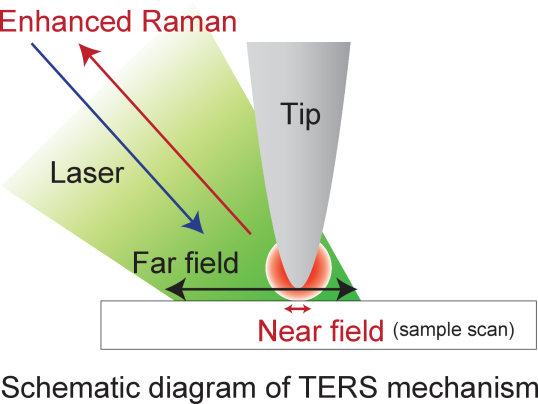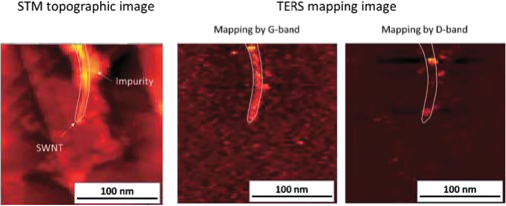UNISOKU
| USM1400-LT TERS | |||||||||||||||||||||||||||||
|---|---|---|---|---|---|---|---|---|---|---|---|---|---|---|---|---|---|---|---|---|---|---|---|---|---|---|---|---|---|
|
Low Temperature (LT)-UHV/Tip Enhanced Raman Spectroscopy
World's first newest single molecule imaging method by low temperature (LT). Application
About Tip-Enhanced Raman Spectroscopy (TERS)TERS is the ultimate combination of two well proven techniques. It combines the strength of Raman Spectroscopy and Scanning Probe Microscopy. The optical intensity enhanced by the near field effect around the conducting STM tip — with the result of a strong localisation of the optical signal. Single molecule spectra become detectable within minutes. USM1400-LT TERS (Based on USM1400 Scanning Probe Microscope-LT TERS)Optical access with high collection efficiency can be realized by mounting a lens with a piezo motor on the SPM stage under low temperature, high vacuum. Combined with confocal Raman spectroscopic system, high stability tip enhanced Raman scattering imaging (TERS) is achievable. It is a new device that can image the bonding state of molecules and crystals in sub-nanometer scale. Features
Application exampleChemical image and topographic imageExample : TERS mapping results of Carbon nanotube G-band and D-band TERS mapping of CNT on silver substrate were observed. Defect of Carbon nanotubes are observed as mapping image. And compare with topographic images. Stable measurements of TERS signal using low temperature (LT) condition.Time resolved measurements of TERS spectra of 1,2-Di(4-pyridyl)ethylene (DPE) at RT and LT (Liq-N2) condition. Time resolved measurement of TERS spectra at same point are measured. TERS spectra observed at low temperature (Liq N2) conditions are more stable than that of RT. High spatial resolution reached "Single molecular level"Co-deposited ZnTPP and H2TPP form an alternating chain of molecules on an Ag substrate. Subsequently Local Raman spectra have been taken in the indicated spots. (blue = H2TPP; red = ZnTPP adsorption sites). The related spectra reveal distinct differences which can be attributed to the differing chemical bonding states of H2TPP as exposed to ZnTPP. Single molecular resolution in Raman spectroscopy Specifications
|
|||||||||||||||||||||||||||||















